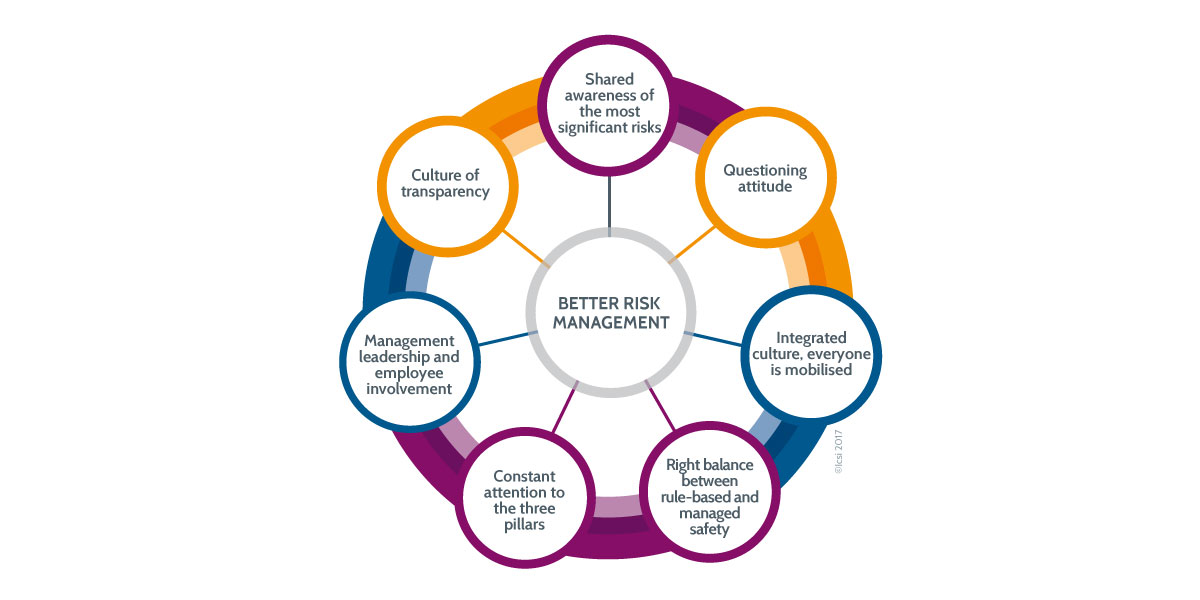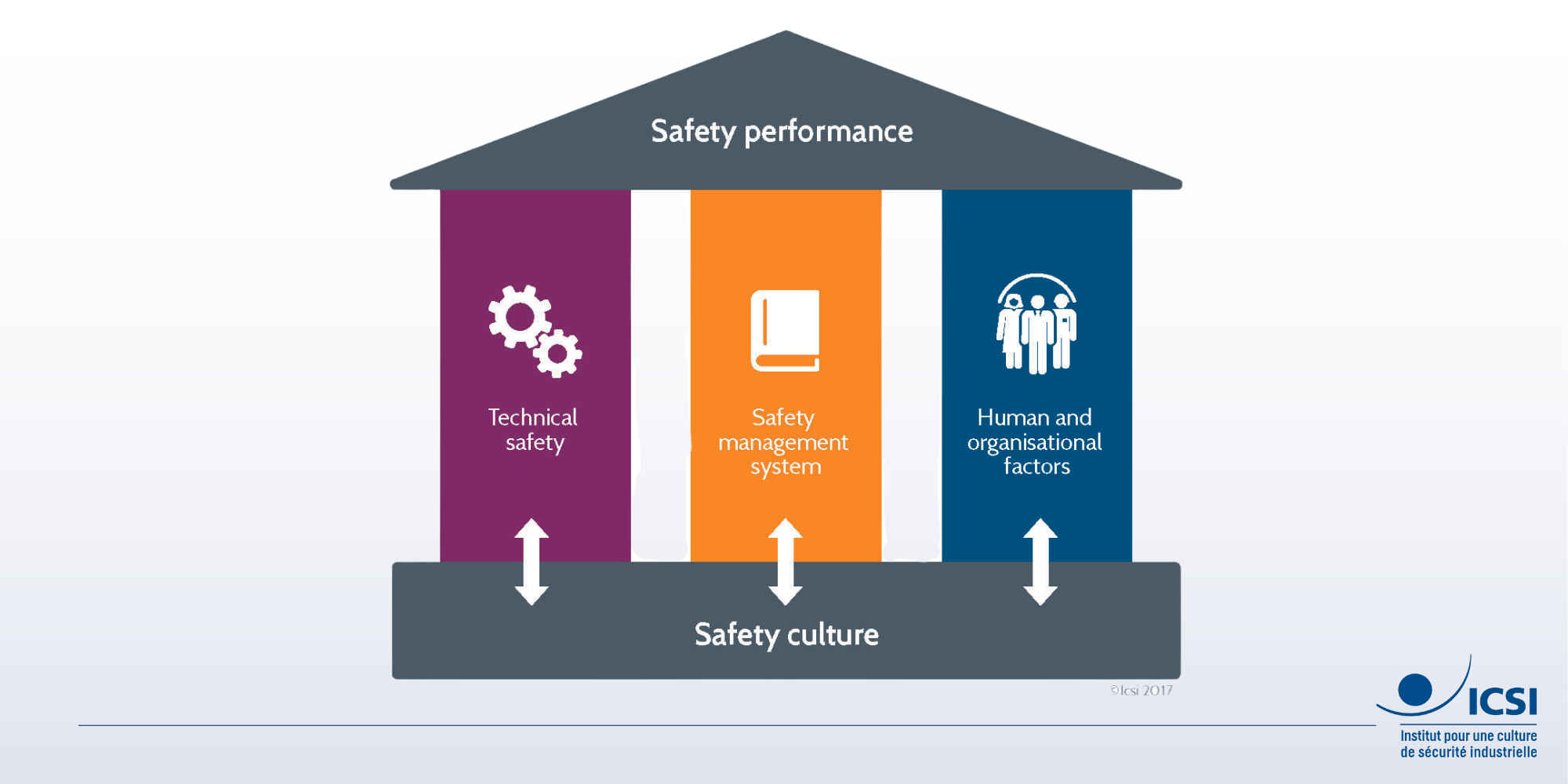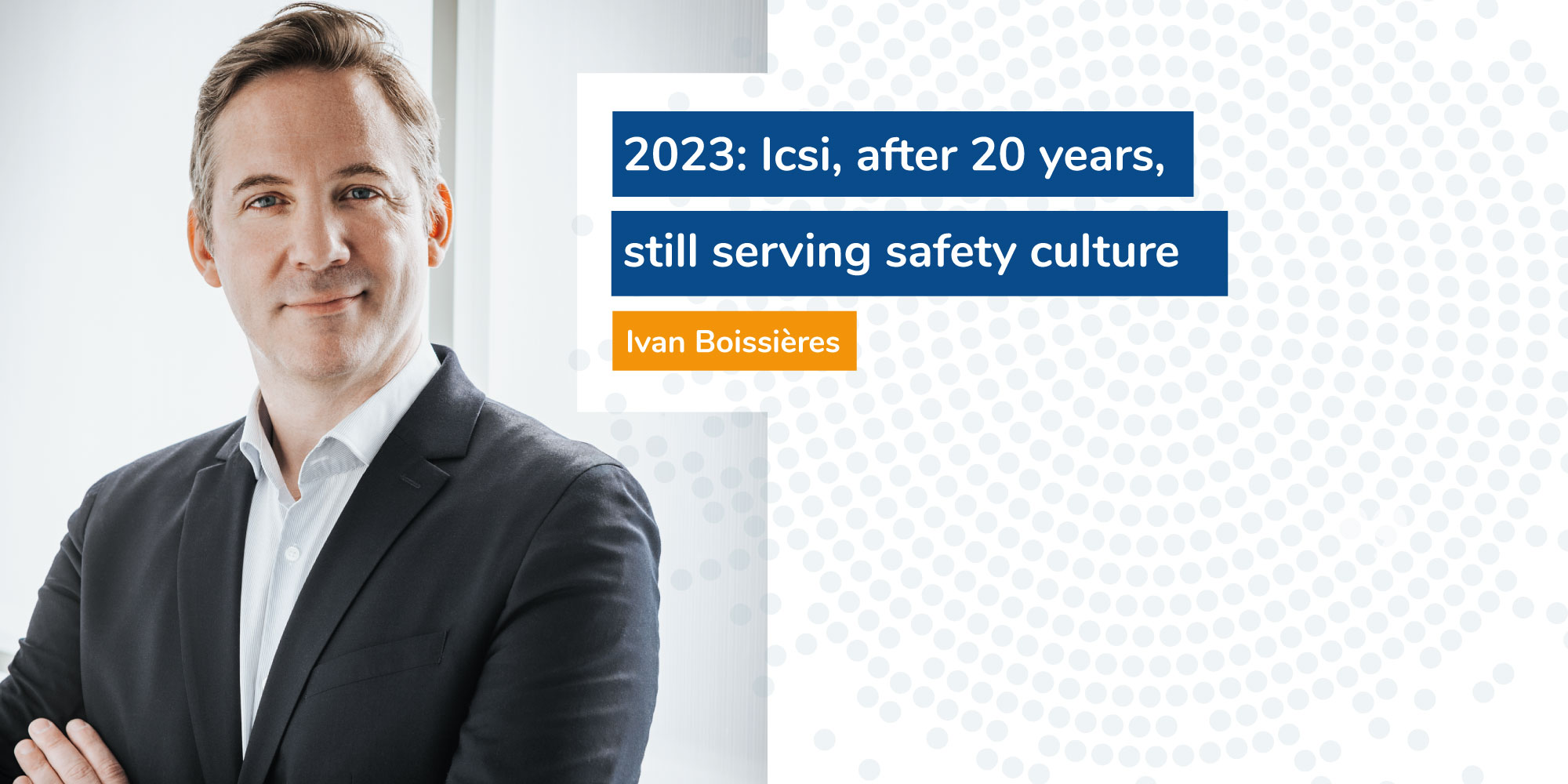Attributes of a successful safety culture
 Attributes of a successful safety culture
Attributes of a successful safety culture
Some organizational cultures are more open than others to the consideration of safety in trade-offs. The good news? We know what they look like! Which is an excellent starting point to know where to focus efforts to change. So, what are the attributes of a successful safety culture?
Numerous studies have highlighted the characteristics of an organizational culture that supports industrial safety. They can be categorized into seven main groups, related to:
- the organization's overall strategy (in purple),
- its actors (in blue)
- processes (in orange).
#1. Shared awareness of the most important risks
This is so obvious that we often tend to overlook it. But we must not forget that shared awareness of the most important risks is a priority when it comes to safety, because it is these risks that are the greatest threat to the organization.
Risks can be classified according to their seriousness: minor accidents, serious or fatal accidents, and major incidents likely to result in a large number of victims, or have consequences for the environment. At the same time, different companies face different risks, and are, therefore, exposed to very different types of accidents: falls from heights, explosions, electrical risks, fire, etc.
The prevention of major incidents, and serious and fatal accidents is a prevention priority.
#2. The interrogative culture
Here, the idea is that everyone agrees that risks can never be fully controlled. The organization is in a constant state of vigilance, even if many years have passed with no serious accidents, and cultivates a culture of doubt.
Actors are aware that, regardless of the quality of preparations, technical barriers, and procedures, it is always possible that what actually happens is different to what was planned. It is therefore necessary to constantly question what is really happening on the ground, and encourage alerts and warnings.
The organization encourages feedback and the search for the root causes of serious events. It learns from what has happened in the past – also known as a learning culture – and its systems, procedures, training programs, etc. are updated accordingly.
#3. The appropriate balance between initiative-based and rule-based safety
When the organization sets out rules and procedures that are expected to ensure safety, we call this rule-based safety. Compliance with these rules is recognized and rewarded.
However, in real-life, scenarios can occur where there are no rules that can be applied. In the field, face-to-face with a new situation, women and men must use their skills and experience to take appropriate action: this is initiative-based safety. Initiative-based safety means that employees have a certain amount of leeway to manage situations in the best way, depending on the context.
The challenge for the company is to find the right balance between initiative-based safety and rule-based safety, and there is no one model that fits all situations. The trade-off between initiative-based and rule-based safety depends on the company, and its sector of activity.
#4. Integrated culture: safety is everyone’s business
Integrated culture results from the conviction that no one individual has all of the knowledge that is needed to ensure good safety performance. All of the company’s departments must be able to access essential safety information.
Everyone – from the managerial hierarchy, to operators, sub-contractors and employee representative bodies must be encouraged to participate.
#5. Permanent attention to the three pillars
Safety is based on 3 pillars:
- Technical safety is the first. Technical actions relate to the integrity of the installation, and measures such as the implementation of automatic protection mechanisms, or fault sensors.
- Safety management systems formalize processes, procedures and rules.
- Much more recently, human and organizational factors have emerged, which takes into account the contribution of individuals and teams.
Improving safety relies on coherent action on these 3 pillars.
#6. Management leadership and employee involvement
Managers at all levels are key players in safety culture. Their behavior, and the importance they give to safety in the day-to-day trade-offs that they must make are the main determinants of the safety behavior of other members of their team. Managerial leadership is a prerequisite to collective buy-in. The manager must be able to influence behaviors to ensure that they become safer.
A direct participatory management style combines stringent requirements with a genuine willingness to listen, and take into account what is happening on the ground. Employee buy-in is fostered by a climate of trust, and goes hand-in-hand with a greater willingness to report information, and the analysis of dangerous situations, or incidents that could have been very serious.
#7. The culture of transparency
Here, the focus is on generating trust within the organization, so that staff feel free to speak out. The concept of just culture is inherent in the culture of transparency. Just culture is linked to the implementation of a clear and fair reward/ sanctions policy that is understood by everyone working in the organization. Good practices foster confidence among personnel. Conversely, arbitrary punishments and a lack of recognition encourage mistrust.
Walking the talk, along with maintaining the same message, both externally and internally, are other keys to a culture of transparency.
A publication



